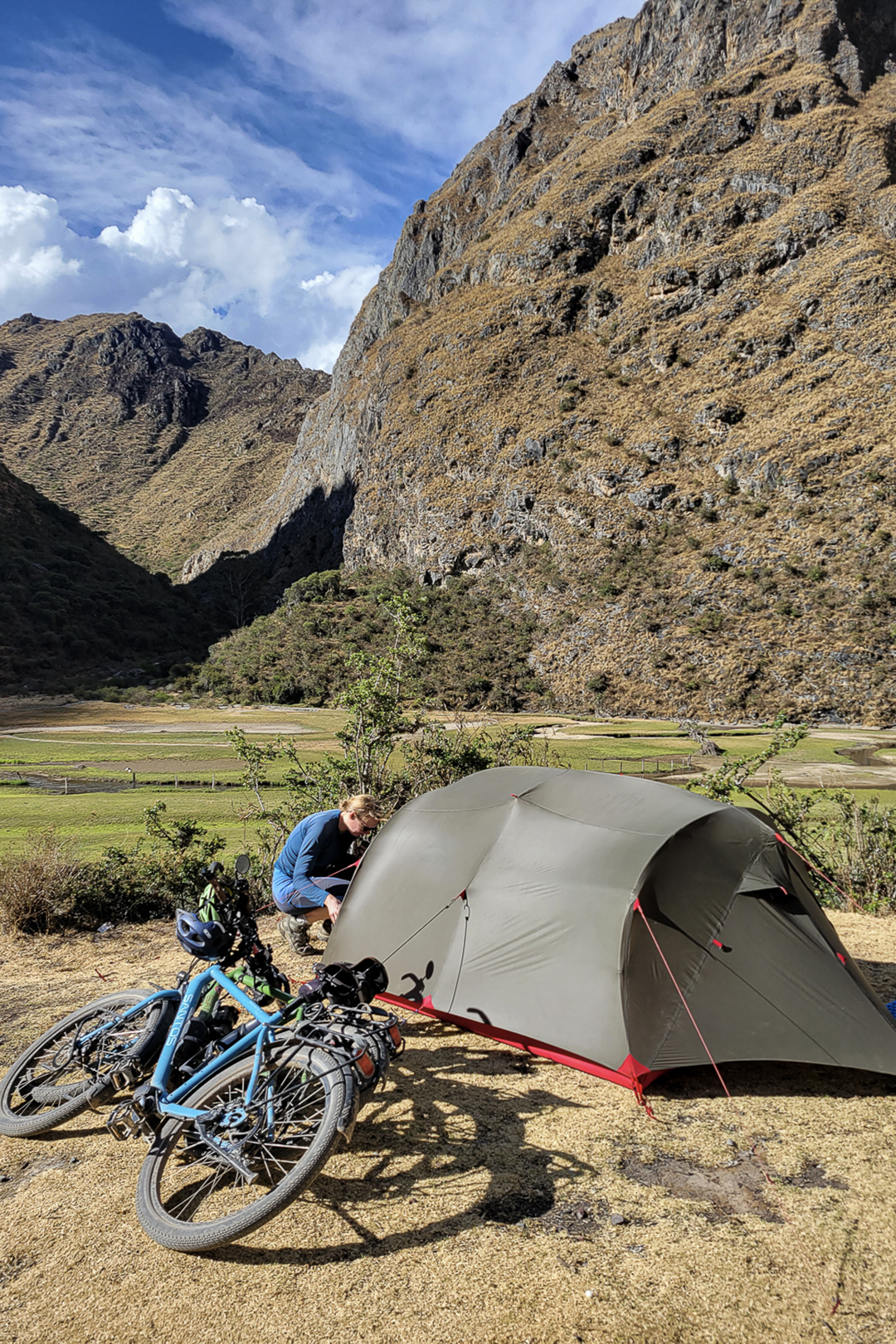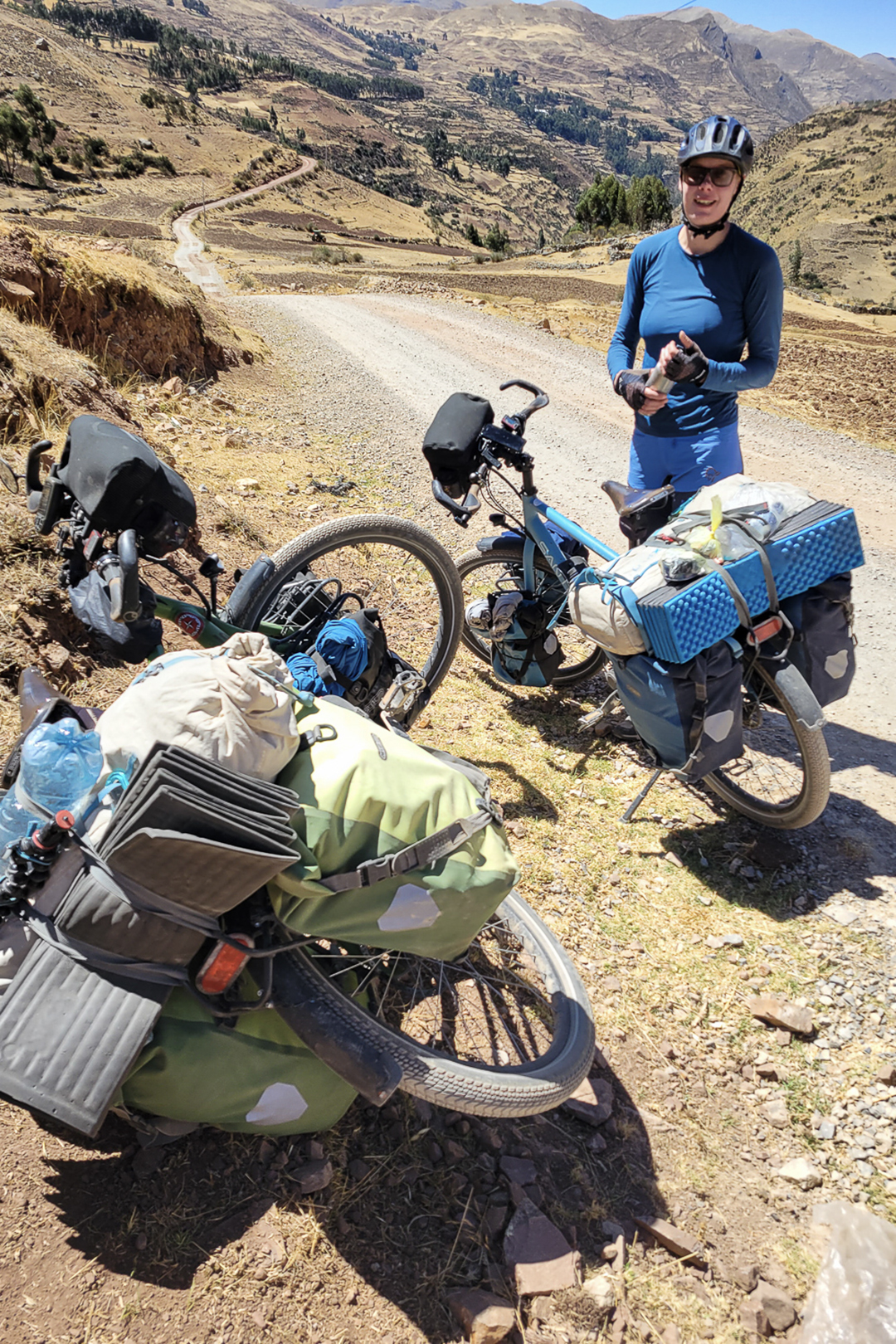Cycling to new heights: conquering Peru's Great Divide

Their GPS reads 4994 meters, marking the highest altitude they have reached so far on their trip. Cycling themselves up to almost 5,000 meters fills them with pride and happiness. Danish Santos Riders Martin and Katja are on small dirt roads in the mountains of Peru, following a route known as the Peru Great Divide.
Martin and Katja Santos Travelmaster 3+
4994 meters up
The mountain pass up to almost 5000 meters is particularly tough, with lots of hairpin bends and steep climbs. Just when we think we've made it to the top, there is a small descent and two more hairpin bends around the corner before we reach the real summit. It's a false peak, which we call those peaks that surprise us with yet another ascent. "Whew," we gasp. We have to take it easy and climb only 20 meters of altitude at a time before catching our breath. Although we have been cycling in the mountains and on the high plains for several months and are well acclimatized, we feel the lack of oxygen at this dizzying altitude.
We celebrate our "victory" with a kiss, a biscuit, and a picture of both of us taken with the SLR camera. Martin climbs the last bit of rocks to set up the camera, and we cheer as he most likely stands at 5000 meters.
Legendary cycling route
The Peru Great Divide is an informal cycling route through the mountains of Peru, devised by an English couple. It has become so well-known that it attracts adventurous cyclists from all over the world. Despite this, we only met three other cyclists on the 380 kilometers we followed of the 1200-kilometer-long route. The route is known to be remote and follows minor dirt roads through the mountains of Peru. Therefore, you can cycle in beautiful nature without encountering too many cars, which is every cyclist's dream. The part of the route we cycle contains no less than 8,500 meters of cycling. We cycle up a mountain pass between 4,400 and 5,000 meters and then all the way down to 3,000 meters again. We repeat this approximately once a day, except for a few days when we constantly cycle at an altitude of over 4,300 meters.

Cold nights in the Andes
Our warm gloves, jackets, and sleeping bags are stored at the top of our bike bags, as it gets cold at night in the heights. We decide to stop a day earlier at 3 pm as we are both tired after many days of hard cycling. We find a nice lake to camp at, located at an altitude of 4500 meters. We pitch our tent, visible from the road because we can’t find a good hiding spot. A car stops, and a man wearing jogging clothes approaches us. He gives us sweet aniseed bread and inquires if we are sure we want to sleep there as it gets very cold at night. We assure him that we are accustomed to the cold and have good sleeping bags. As the sun sets a few hours later, we realize he was right. This place is colder than the other places we have slept in, and we have to use both the all-round sleeping bag and the summer sleeping bag to keep warm. When we go out to brush our teeth later in the evening, there is already frost on the tent, and the night is bitterly cold.

Never alone in the mountains
We have learned that in Peru, we are never alone. No matter how far we cycle into the mountains, we encounter people, small villages, or shepherds who take care of their llamas, alpacas, and sheep. Although we think we hide well when we camp, we are sometimes woken up by a "Buenos Dias" from an early morning rider on his way to tend to his animals.


One morning, we receive an unexpected visit from a boy on a scooter who is on his way to work at a nearby pond. We are brushing our teeth as he drives all the way to our tent, which is behind some hills, about 200 meters from the small dirt road we came from. He reaches for our tent as soon as he arrives and asks, "Is this for sale? What's the cost?" We explain that the tent is not for sale since we need it for ourselves, which should be obvious given the situation. However, he insists on knowing the price. We tell him that it costs as much as his scooter, and he admits that he probably should not buy our tent.

The trout farm
After enduring far too many days of pasta and tuna for dinner, we are finally treated to a feast by Jennie. We have stopped at a trout farm where we have heard that other cyclists have been allowed to pitch their tents. It is free if we buy dinner at the small restaurant on site. We go all out and order two dishes of trout each. Jennie doesn't question our order. She must have encountered hungry cyclists who cycle through mountain passes daily before. We enjoy deep-fried trout and a trout "chicharron," which is a dish with pieces of trout, rice, and potatoes. In the evening, we retire to our sleeping bags feeling full and content while listening to the gentle sound of the nearby river.

Our adventure on the Peru Divide has come to an end after ten days in some of the most stunning landscapes in South America. The jungle awaits us.

Come along on our trip
Follow our trip on our Santos page, on Instagram @americasbybike or on our blog www.americasbybike.dk.

